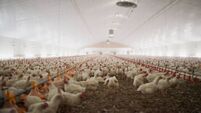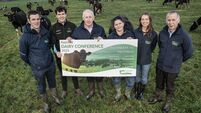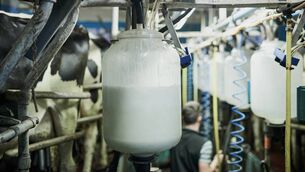Imported straw and maize will be mainstays on beef farms this winter

As the evenings begin to close in rapidly, the farmer’s mind invariably turns to winter.

It may only be the end of August, but planning for the winter is well under way.
As well as attempting to get sufficient feed for the winter, time must also be spent getting the yard and sheds ready for housing.
Issues such as straw vs woodchip vs peat for bedding have to be weighed up, and availability and price will obviously be deciding factors.
Continuing to gather feed supplies is another stressful current task.
In a normal year, the vast majority of grass silage would be saved by now.
But 2018 is no ordinary year, and a massive amount of third cut and bales will still (hopefully) be made.
Along with gathering up later cuts of silage, many have now planted Westerwolds grass with the intention of getting a cut later in the autumn and again next spring.
There are some reports of these crops emerging slowly due to some areas still having a very significant moisture deficit.
But some other crops are flying out of the ground where a good drop of rain has fallen recently.
There is nothing you can do for slowly emerging crops, once they have received sufficient N, P and K — only wait for rain to fall.
The cereal harvest is rapidly coming to an end.
Cereal prices continue to increase on an almost daily basis.
Wheat, barley and oats look like being scarce in Ireland for the coming feeding season, with many depending on imported maize grain as the mainstay of their starch/energy supply.
Amazingly, the maize harvest for most is only thre or four weeks away, and crops look excellent all over the country, bar some in the southeast which were hit severely by drought.
All we need now is a good spell of weather around the harvest to get the maize crop in the pit.
Beet crops look like returning variable yields this yeark, depending on the sowing date, and the geographical location.
Pulling of beet will probably begin in early October.
Stock up on straw
Straw is in big demand this harvest, and unfortunately there is a massive deficit in supply.
There will be an option to purchase imported straw over the coming weeks, as action has been taken to actively source it from around Europe, and from Spain in particular.
Imported wheaten, barley, oaten rye and rape straws will be fed this winter on many farms, in conjunction with concentrates to replace grass silage either in part or entirely.
An issue which pops up every year is the variation in the weight of straw bales.
Before you buy bales locally, get an approximate weight to see what you are getting for your money.
Compare the options available to you, and make your purchasing decision based on the lowest cost per tonne of straw according to bale weight.
My understanding is that all of the imported straw that will be available will be exclusively sold by the tonne.
Animal performance
If you are lucky to have good grass growth, it is still worth remembering that it does not supply the same feed value as it did earlier in the year.
As we all know, once the nights close in, grass gets softer and wetter.
If grass is growing fast, it is only 13-15% dry matter at the moment, and animals are finding it more difficult to consume sufficient dry matter to maintain performance.
Animals intended for finishing off grass over the coming weeks should be supplemented with a low-protein concentrate to get the required weight gain and fat cover at slaughter.
Late-born, bucket-reared calves should also continue to be supplemented at this stage, in order to maintain growth rates before housing.













